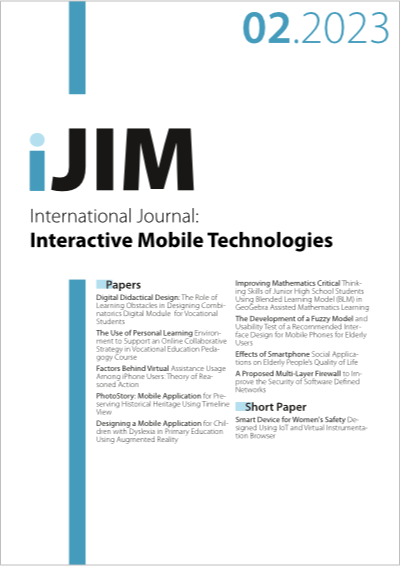Designing a Mobile Application for Children with Dyslexia in Primary Education Using Augmented Reality
DOI:
https://doi.org/10.3991/ijim.v17i02.36869Keywords:
design thinking, dyslexia, figma, metaclass studio, tinkercadAbstract
Dyslexia is a learning disorder that hinders spelling, communication and reading comprehension in such a way that its objective proposes to design a mobile application for children with dyslexia in primary education using augmented reality. In the methodology, Design Thinking is used to help us solve the problems of users with group work and decision making to choose the best innovative proposal for its design, using the mobile prototype design tools called Figma, TinkerCad is used for 3D modeling and MetaClass Studio is used to visualize the augmented reality. In the results shows the analysis that is done to parents to find the main problems of children with dyslexia, so that the innovation team will be responsible for showing the solution that is the mobile application with augmented reality so that parents are comfortable with the proposed, finally the mobile prototype with augmented reality will be validated by 5 experts showing a 91% level of acceptance. As a conclusion is to provide a contribution to the educational society for the solution of problems in dyslexia leading to an improvement in communication of the child.
Downloads
Published
How to Cite
Issue
Section
License
Copyright (c) 2022 Misael Lazo-Amado, Laberiano Andrade-Arenas

This work is licensed under a Creative Commons Attribution 4.0 International License.



